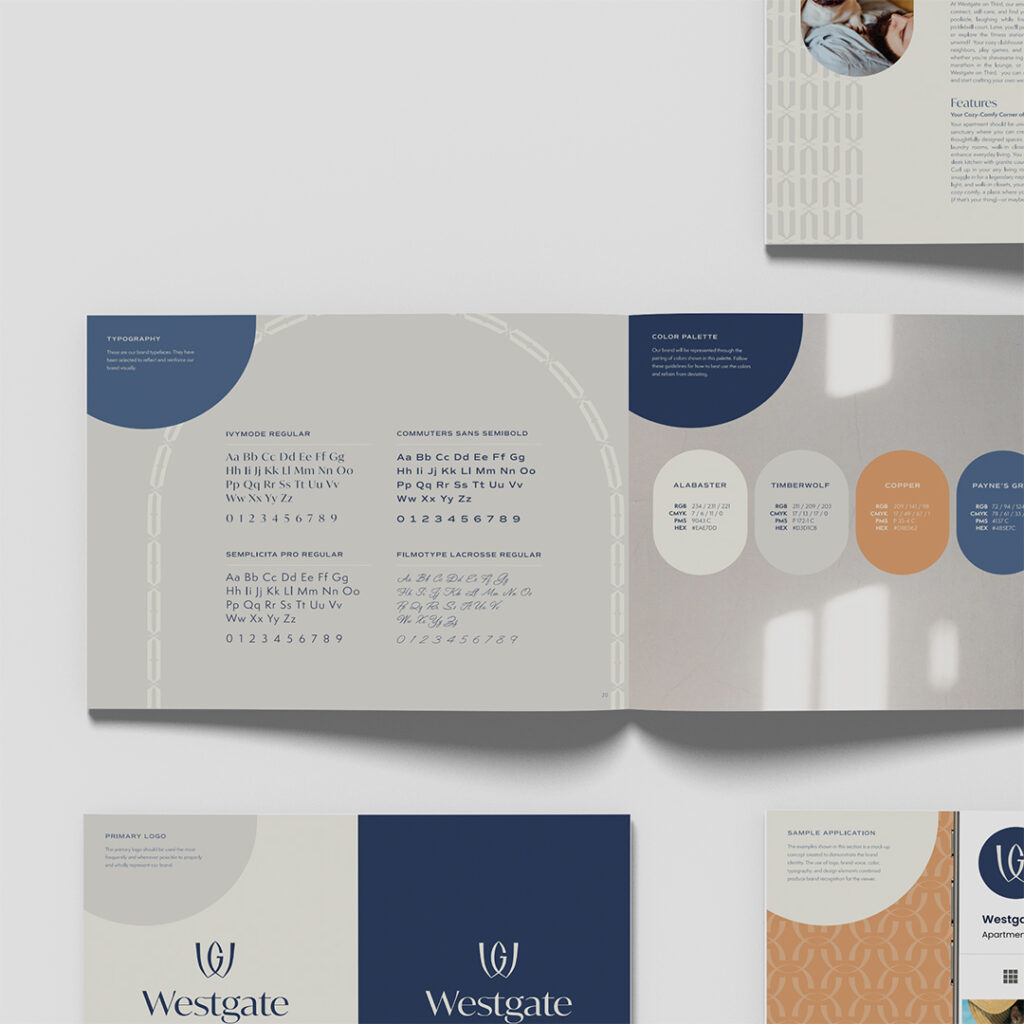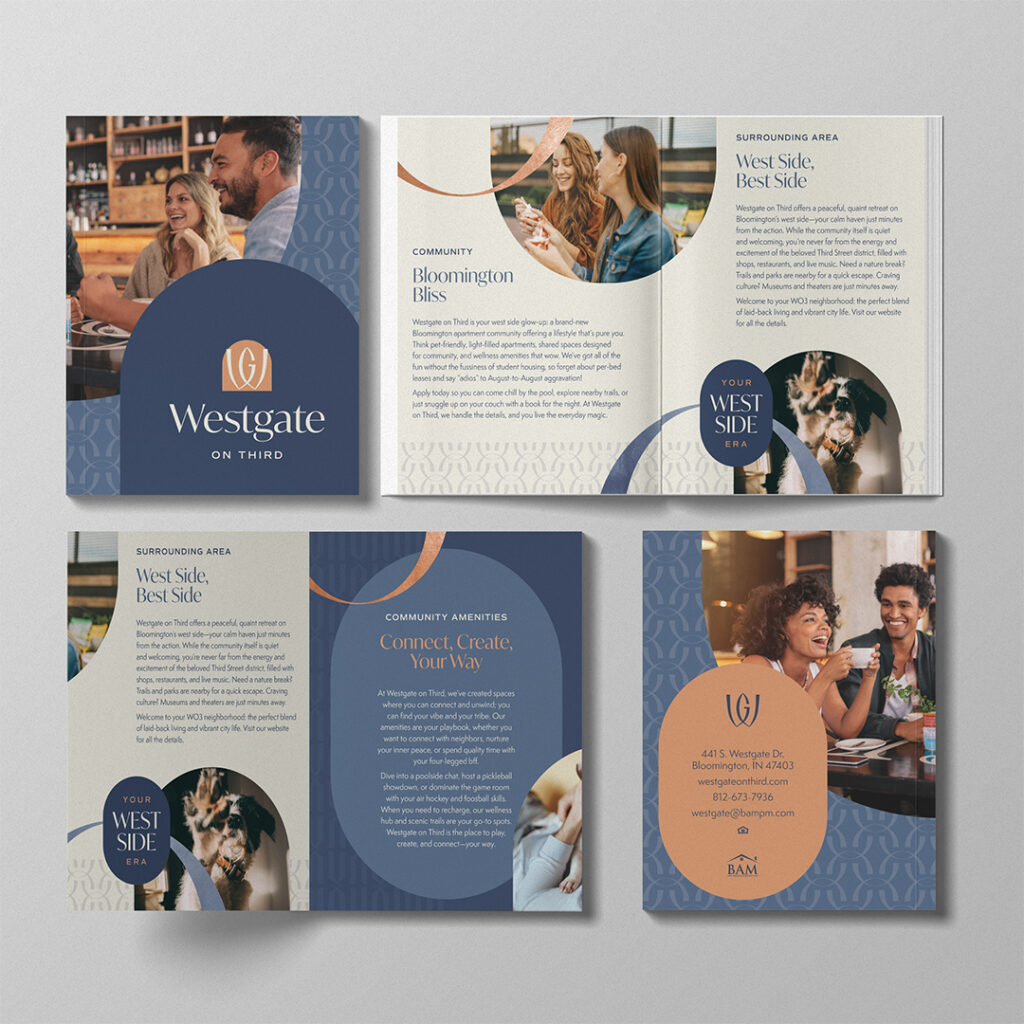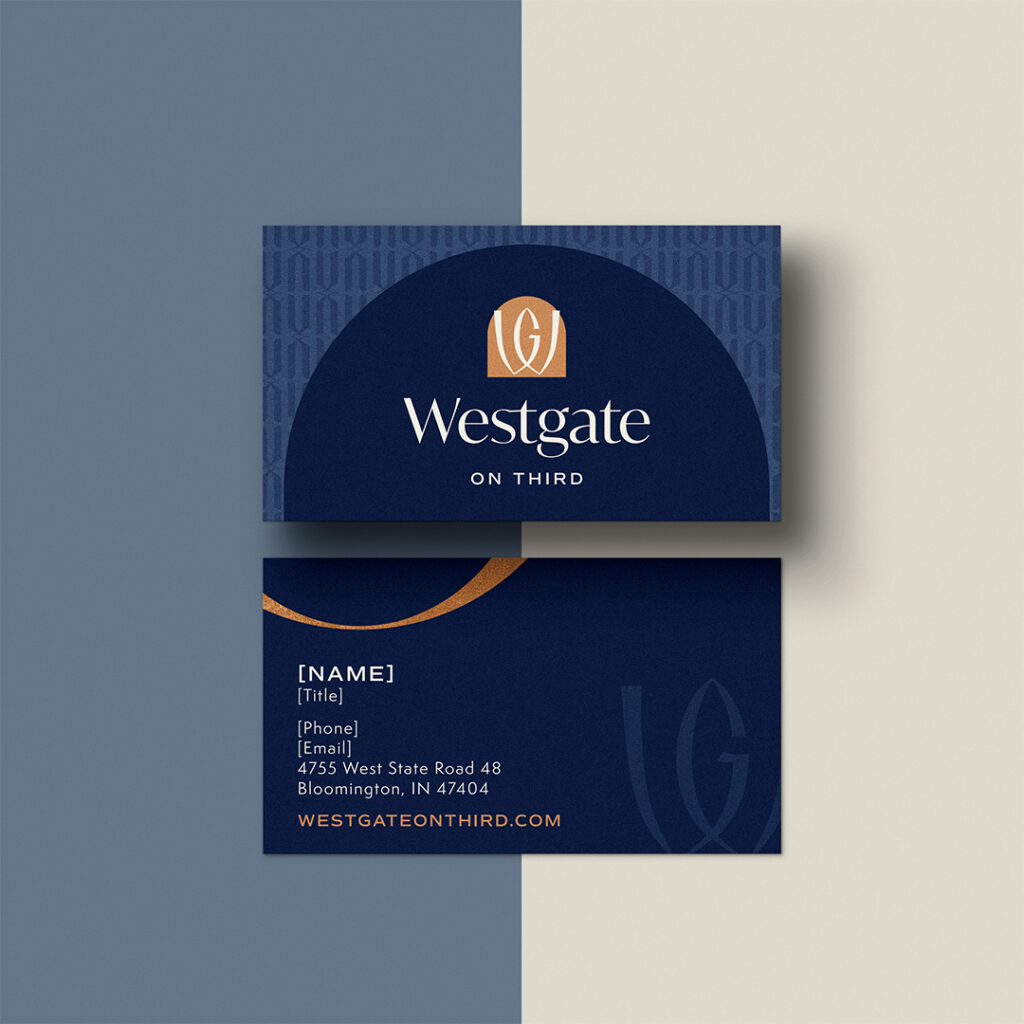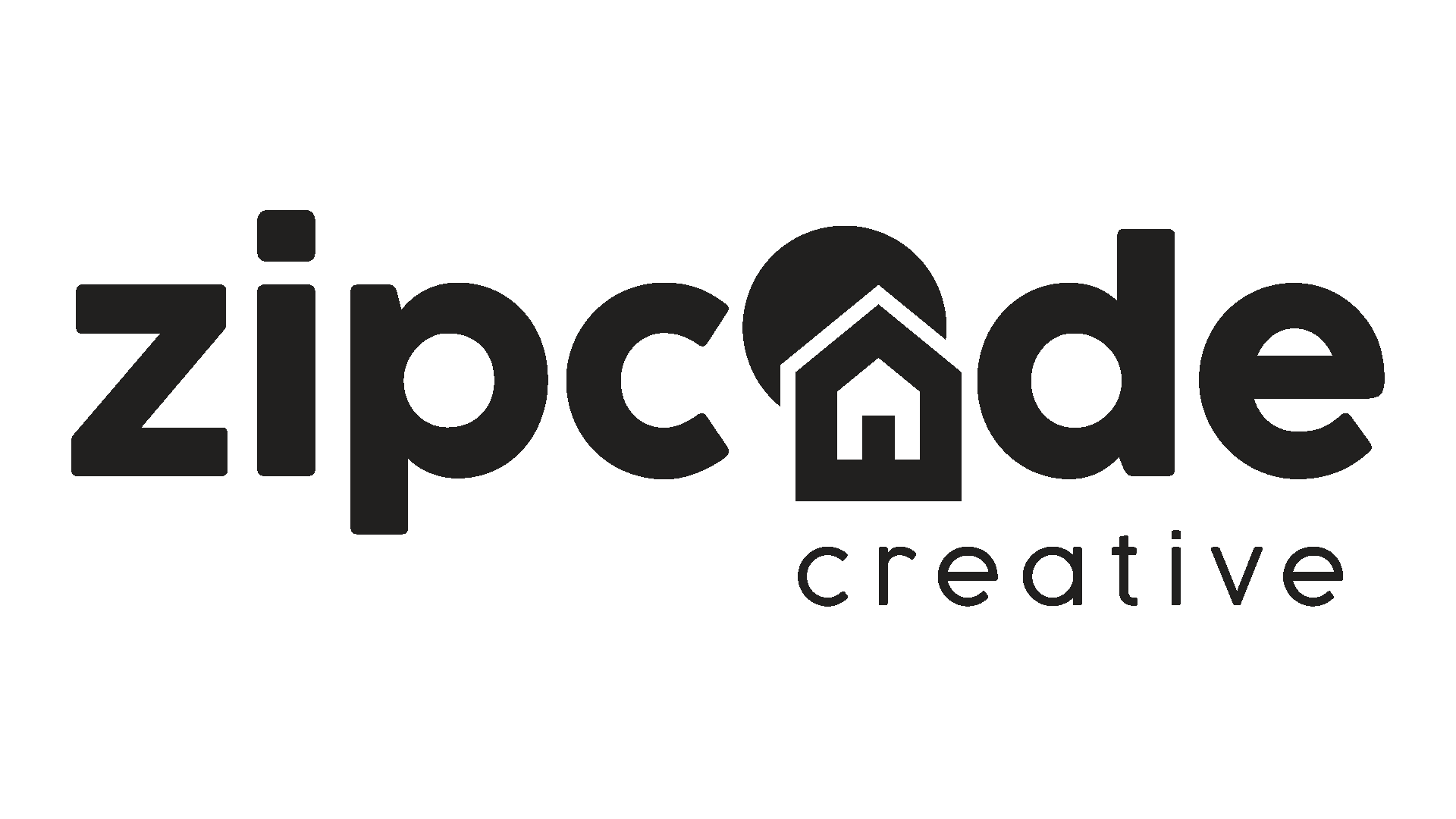
Conventional in a Student Area: Westgate on Third Case Study
Stacey Feeney
Westgate on Third. That name might sound like a student address (especially given its proximity to IU Bloomington), but peel back the layers of this multifamily branding case study and a compelling strategy is revealed. In a location saturated with collegiate life, Wo3 stood as a conventional apartment community ripe with unique opportunity.
Our mission was to cut through the predictable and connect with the discerning independent student or the ambitious post-grad young professional – individuals craving more than cramped quarters and late-night revelry, seeking a more sophisticated vibe and a more established lifestyle.
This conventional vs student housing marketing challenge required careful navigation. According to the National Apartment Association, conventional apartments typically achieve higher NOI at 60.1% of GPR versus 55.8% for student housing, making strategic positioning crucial for maximizing property performance.
Now, enter the additional dynamic of stakeholder vision. Our developer, a creator of enduring, successful properties, held fast to a deep-rooted aesthetic. The tightrope we walked was in forging a brand that not only called to the modern sensibilities of our independent student residents but also served the developer’s established taste.
Key Educational Insight: When positioning conventional apartment communities in college areas, property managers must balance three critical factors: target resident needs, market differentiation from student housing, and stakeholder aesthetic preferences. Success comes from finding the intersection of these sometimes competing demands.
Setting the Stage: Research
First: a deep dive into the project’s essence. This research helped us pinpoint key strategic considerations that any property manager can apply when facing similar conventional vs student housing positioning challenges:
Location Analysis: “Westgate on Third” offered immediate recognition, thanks to its connection to the well-known, student-beloved 3rd Street. Our strategy was to leverage this familiarity while clearly positioning its quieter, more residential west-side location.
For property managers in similar situations, this demonstrates the importance of reframing location advantages rather than fighting them. If you’re near campus, emphasize convenient access to opportunities. If you’re in a party area, position your specific location as offering the energy when desired but tranquility when needed.
Pinpointing the Ideal Resident: Our ideal resident profile moved beyond the undergrad. We envisioned a cohort of young professionals alongside discerning graduate students ready to embrace a more refined, less party-centric lifestyle. The unit mix, leaning towards studios and one-bedrooms, underscored a commitment to those who valued their independence and personal space.
This resident profiling reveals a crucial strategy for college town apartment branding: narrow targeting often yields better results than broad appeal. Graduate students and young professionals typically offer higher income stability and different lifestyle priorities that align better with conventional apartment community models.
Addressing a Market Opportunity: We identified a clear demand for high-quality, upscale apartments independent of the student scene. Research from Harvard Graduate School of Design shows that residents are willing to pay an 8.47% premium for stronger community connections. Westgate on Third was the answer, offering elevated amenities and a refined atmosphere in a convenient location, appealing directly to those transitioning to a more established lifestyle.
The educational takeaway here is significant: often the most profitable opportunities in multifamily marketing exist in underserved segments. Instead of competing directly with established student housing in their specialty, look for gaps between what existing properties offer and what potential residents actually value.
Demographics and Psychographics
Next: A deep understanding of the market’s nuances. Key insights illuminated our strategy and offer valuable lessons for property managers working on similar positioning challenges:
Demographics: The local area presented a significant segment of younger, well-educated individuals, perfectly aligning with our target resident profiles.
Resident Mindset: We explored the lifestyles, values, and attitudes of our potential residents, shaping a brand personality defined by intelligence, sociability, and approachability. This psychographic research is crucial for any conventional apartment community seeking to differentiate from student housing.
Understanding resident motivations helps property managers develop amenity strategies that truly resonate. Where student housing might invest in party-enabling amenities, conventional properties targeting young professionals should focus on career-supporting features like co-working spaces, professional networking opportunities, and quiet study environments.
Generational Currents: Recognizing the influential presence of younger generations was critical. Their emphasis on individuality and digital engagement directly informed aspects of our brand communication strategy.
This insight translates to important marketing considerations: young professionals and graduate students use different social media platforms and respond to different messaging than typical undergraduates. LinkedIn becomes more important than campus flyering; professional development content resonates more than party promotion.
Crafting the Brand Identity
Creating the Westgate on Third brand was a strategic process of marrying our vision with the developer’s established preferences. This challenge is common in multifamily branding and offers valuable lessons for property managers working with ownership groups that have strong aesthetic opinions.


The Logo: A delicate alchemy: the developer’s preferred timeless elegance subtly infused with modern energy, hinting at the vibrant community within.
The design process demonstrated that successful multifamily brand development often requires collaborative approaches that honor stakeholder preferences while ensuring market appeal. Rather than fighting the developer’s classical preferences, we found ways to make traditional elements feel contemporary and relevant to our target residents.
The Experience: A compelling narrative of sophisticated living that pulses with approachable, youthful energy.
This brand experience strategy reflects research from Multi-Housing News showing that storytelling creates emotional connections with potential residents, making properties more than just places to live. For conventional apartment communities in college areas, the story must emphasize sophistication without alienating younger residents.
The result? A magnetic, modern draw for independent students and young professionals nested within the developer’s established brand, building trust and familiarity.
Strategic Application for Property Managers: When working with developers or ownership groups with established aesthetic preferences, don’t fight their vision—elevate it. Show how their preferred style can appeal to your target market through subtle modern touches or fresh applications of classic elements.
Amenities That Support Brand Positioning
The amenity strategy for Westgate on Third demonstrates how physical spaces can reinforce brand positioning in conventional vs student housing marketing. Every amenity decision became a communication about who we served and what we valued.
Professional-focused amenities included co-working spaces with high-speed internet, quiet study areas with sound insulation, and spaces for professional networking events. These choices clearly differentiated the community from typical student housing amenities like game rooms and party-focused pool areas.
Wellness amenities reflected the target demographic’s priorities: a professional-grade fitness center, yoga and meditation spaces, and outdoor areas designed for small gatherings rather than large parties. Technology integration was crucial but subtle—smart home features and fiber internet were standard inclusions because our residents’ success depended on reliable connectivity.
For property managers considering similar positioning, the key insight is that amenities aren’t just features—they’re brand statements. Focus on amenities that appeal to working and studying residents rather than party-focused features. Consider how your amenity mix reinforces or contradicts your target market positioning.
Marketing Strategy Alignment
Our marketing channel strategy for Westgate on Third differed significantly from typical student housing approaches, reflecting the target audience’s professional aspirations and media consumption habits.
Instead of campus flyering and undergraduate social media channels, we invested in LinkedIn advertising and content marketing. Graduate students and young professionals actively use LinkedIn for career development, making it ideal for reaching serious, goal-oriented residents.
Content marketing became powerful for demonstrating understanding of our target audience. Blog topics like “Creating a Productive Home Office” and “Professional Networking in College Towns” attracted exactly the residents we wanted while positioning the community as understanding their priorities.
Partnership marketing proved especially effective for college town apartment branding. We developed relationships with graduate school departments and local young professional organizations, providing event space that built our reputation in exactly the right circles.
The educational insight for property managers is that marketing channel strategy must align with brand positioning. If you’re targeting young professionals and graduate students, your marketing approach should reflect their professional aspirations rather than undergraduate social priorities.
Overcoming Implementation Challenges
The biggest challenge in this conventional apartment community positioning was overcoming existing perceptions about the Third Street location, which was strongly associated with undergraduate party culture.
Our solution involved “location education” campaigns that acknowledged the street’s energy while highlighting our specific advantages. Marketing materials explicitly contrasted “the energy of Third Street” with “the tranquility of the west side.” This approach built trust by being honest about the location while positioning our distance from the action as a benefit.
Another significant challenge was maintaining brand standards during the leasing process. Pressure to fill units quickly can lead to compromising on resident screening or brand positioning. We addressed this by developing clear resident screening criteria that prioritized cultural fit alongside financial qualifications.
For property managers facing similar challenges, the key lesson is that successful conventional vs student housing positioning requires consistency throughout the resident lifecycle. Staff training should emphasize identifying prospects who align with your community values, not just financial requirements.



Creating Resonance
Westgate on Third’s brand strength lies in its alignment. By deeply understanding the target resident, respecting stakeholder perspectives, and grounding our creative choices in market understanding, we crafted a brand that resonates with the intended audience while honoring the client’s classic-leaning preference.
Studies show that properties with strong branding achieve 7% higher occupancy rates, and this strategic balance is the very heart of effective branding—a strategy that transcends mere surface appearances to forge a genuine connection.
The success of this conventional apartment community proves that with the right approach to college town apartment branding, property managers can attract ideal residents regardless of location’s competitive landscape. The key is understanding that branding isn’t just about logos and marketing materials—it’s about creating comprehensive resident experiences that align with your target market’s values and lifestyle aspirations.
Measuring Success in Conventional vs Student Housing Marketing
The true test of any multifamily branding strategy lies in measurable results. Westgate on Third’s success validates the effectiveness of strategic conventional apartment community positioning in college markets.
Occupancy performance exceeded market averages, with strong leasing velocity that outpaced both student housing and conventional apartments in the area. More importantly, resident retention rates were significantly higher than typical student housing properties, indicating that residents found what they were looking for and wanted to stay.
Lead quality metrics were particularly telling. A much higher percentage of leads met financial qualification criteria compared to student housing properties, indicating that our targeting effectively reached residents with the income stability needed for success in conventional apartment communities.
Resident satisfaction surveys consistently highlighted the “adult atmosphere” and “professional management” as key differentiators. Online reviews maintained high ratings with residents specifically praising elements that reinforced our brand positioning.
Perhaps most importantly, referral rates exceeded industry averages. When residents actively promote your community to their network, you know the brand promise is being delivered consistently throughout the resident experience.
Applications for Property Managers
Whether you’re managing a property portfolio that includes both conventional and student housing or looking to reposition an existing community, the principles behind successful multifamily branding remain consistent: understand your market, know your audience, and create authentic connections through strategic design.
For property managers considering similar positioning, start with competitive analysis that goes beyond surface-level comparisons. Look for gaps between what existing properties offer and what potential residents actually value. Often, the most profitable opportunities exist in the spaces between established categories.
Develop clear resident personas based on research rather than assumptions. Understand not just who your ideal residents are, but how they live, work, and make housing decisions. Use these insights to guide everything from amenity selection to marketing channel strategy.
Consider how apartment brand refresh or complete rebrand strategies can help reposition existing properties. Sometimes small changes in positioning and presentation can unlock significant value by attracting different resident segments.
Looking for more insights on multifamily brand development? Our team specializes in helping property managers and developers create distinctive brands that attract premium residents and build lasting community value.
The success of strategic conventional vs student housing positioning demonstrates that in today’s competitive multifamily market, the biggest opportunities often exist in serving underrepresented segments. For properties dealing with multifamily acquisition rebranding or seeking to build portfolio brands worthy of five stars, understanding the nuances of market positioning becomes crucial for long-term success.
Our specialized approach to multifamily branding ensures that whether you’re working with conventional apartments, student housing, or mixed-use developments, your brand strategy aligns with your business goals while creating authentic connections with residents who become long-term community advocates.
Lease More Than a Home, Lease a Feeling.
Ready to transform your apartment community’s brand positioning? Whether you’re navigating the complexities of college town marketing or looking to differentiate your property in a competitive multifamily landscape, our team understands the nuances of strategic brand development. Let’s discuss how strategic branding can unlock your property’s potential and attract the residents who will become your strongest advocates. Contact Zipcode Creative today to start your multifamily branding journey.


